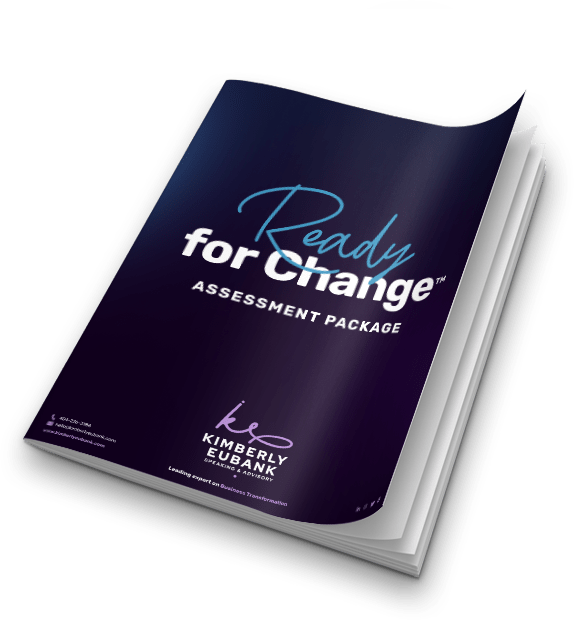What is it?
Every few years in the business space a new term comes into fashion that becomes the “it” phrase for a time period. Folks might remember the buzzwords of “Y2K”, “the Cloud”, “Omnichannel”, and today some of the terms you hear a lot about are “business transformation” or “digital transformation”.
Today’s digital world has made business transactions and experiences happen at a much faster pace than in the past. Business employees have gotten used to their consumer Amazon-like experience of learning, purchasing and delivery and that transparency of experience has seeped into their expectations of what their work experiences should look like as well.
In this more dynamic landscape, businesses have found that in order to keep up with, or better yet, get ahead of their competition it will require re-looking at how they have done business for decades. And often that look, if done honestly, brings up sins from the past that have been long ignored or pushed down the road.
For many companies, business transformation done correctly will require them to go back to the foundation of how they get work done to re-engineer their basics before they can add new and innovative experiences, “the sprinkles,” onto their experience sundae. While challenging and sometimes painful, this process is critical for businesses to stay relevant for the decade to come and to secure long-term success.
At its core, Business Transformation is a fundamental and holistic change in an organization’s strategy and ways of working. This will require cultural and technological shifts to enhance performance and drive sustainable growth. It goes beyond the incremental changes or the maintenance mode on which many companies have been relying. Business Transformation aims to reshape the entire business model to meet the challenges of the rapidly evolving, digital first marketplace.
Who Should Be Undertaking a Transformation
While the list below isn’t meant to be exhaustive, organizations which might benefit from some degree of transformation work include:
- Established organizations that need to improve their customer and employee experiences to catch up to (or surpass) the competition.
- Merging organizations that need to synergize and optimize their joint operations.
- Growing companies ready to move to the next revenue level that need to scale their operations to keep up with their success.
- Fast-moving companies that have relied on crude but effective solutions for years but now need to rethink their operations and business experiences.
- Expanding companies moving into new channels, segments, or geographies who need to broaden their business experiences to optimize those opportunities.
So, if you are a company in need of a business transformation how do you know what you are signing up for?
HOW DO YOU DO IT?
There are key elements of transformation that are critical for your business to understand fully before you begin work and spending funds.
Get Clear – Strategic Repositioning
Getting Clear on why the organization is undertaking a change effort and what that effort will be is foundational to all aspects of transformation, no matter the size of the company.
Successful business transformation starts with a clear vision and strategic goals. Organizations must assess their current position in the market, identify feasibility and vulnerabilities, and realign their go forward value proposition. It is critical to outline the necessity and benefits of the change, including the repercussions for not changing.
Get ready – cultural appraisal
Getting Ready for business transformation is imperative to bring to light potential blind spots which could thwart your transformational efforts down the road. Completing an honest, open assessment will be both a time and money saver because it helps you anticipate issues before they become roadblocks and allows you to identify options to overcome these obstacles.
In any transformation, the cultural change component is a huge element that drives its success or failure. It is vital to get this right. It is important for employees and customers to understand how this change is going to benefit them. The “what’s in it for me” is critical to getting buy-in and ensuring momentum. This includes focusing on problem solving and removing pain points, fostering innovation, promoting a customer-centric mindset, and encouraging continuous learning among employees.
Addressing technical debt, which is the implied cost incurred when businesses do not fix problems that will affect them in the future, is crucial during transformations. This is when the decisions of the past to kick that can down the road year after year come home to roost. The accrual of that technical debt has caused existing problems to get worse over time and the longer your organization has allowed technical debt to build up, the more costly it will be to rectify. But rectify, you must. Executives are inundated with articles about how incorporating cutting-edge technologies into their business will solve all their problems in no time, but the reality is, that if you implement the cool new tools on an unstable, outdated, or unclean base then you will be disappointed in the outcomes.
It is imperative that as part of your business transformation you take the time to clean the house. This could involve adopting new software, implementing automation, or leveraging artificial intelligence to improve operational efficiency. But at least at the beginning, it likely means making sure that your corporate plumbing and electrical, so to speak, is clean and up to code. If you have bad or incomplete data for instance, you have to fix that problem before you start exposing it to customers or driving automation off of it.
Implementing a business transformation often requires significant financial and human resources. Both of these elements must be carefully planned before work begins. The reality is that you have to keep the lights on at the same time as you are building the new experience, and it is very difficult for one team to do both well. Organizations must carefully allocate resources and consider partnerships or external support when needed. Budget is also a factor; transformations are neither quick nor inexpensive. Allocating a proper budget for multiple years to resource systems and teams is crucial for success.
Get ALIGNED – POLITICAL CALIBRATION
Getting Aligned is another element of transformation that can make or break your success. It is necessary to identify any structural, philosophical, or political disconnects and create consensus before the project starts.
It is imperative to ensure key leaders are in agreement, not just at the 50K-foot view but at a more granular level on the need for transformation and their support of the effort. This minimizes the risk of teams communicating and working at cross-purposes which is inefficient and detrimental to achieving the larger goal.
Effective leadership communication is critical throughout the transformation process. Leadership must articulate the vision for change, the “what’s in it for me” and be able to address concerns and gain buy-in from all levels of the organization. One of the most common challenges in business transformation is resistance from employees. Addressing this resistance requires effective communication, providing training and support, and fostering a culture that values innovation. Strong and visible leadership is essential for driving the transformation forward, including messaging what happens if the organization fails to change. This can help employees feel compelled to achieve the end result and drives buy-in.
Striking the right balance between short-term results and long-term evolution is a delicate challenge. Organizations must manage expectations (even amongst senior leaders), communicate realistic timelines, and celebrate short-term wins while staying focused on the overarching long-term transformational goals.
Is It Worth It?
Today’s business landscape is evolving at an unprecedented pace. Organizations that fail to adapt risk becoming obsolete. Business transformation enables companies to proactively respond to market trends, customer demands, and emerging technologies in a timelier manner.
In a globalized economy, competition is fierce. Business transformation provides a competitive edge by allowing organizations to differentiate themselves, innovate faster, and deliver superior products or services.
Business transformation or Digital Transformation is, therefore, not merely a buzzword; it is a strategic imperative for organizations aiming to thrive in today’s dynamic business environment. By understanding the key components, recognizing the need for change, following a structured process, and overcoming challenges, businesses can unlock their full potential and position themselves for sustained success in the years to come.


